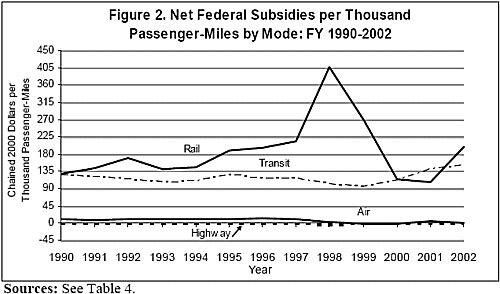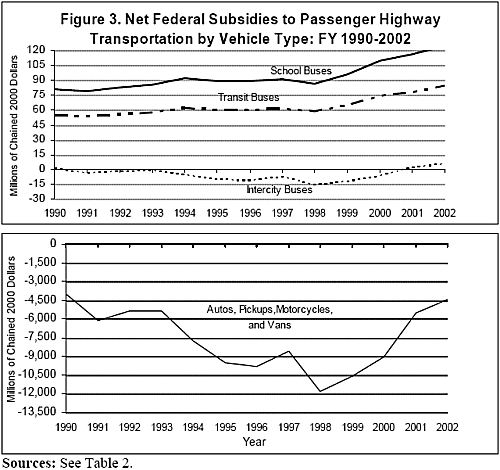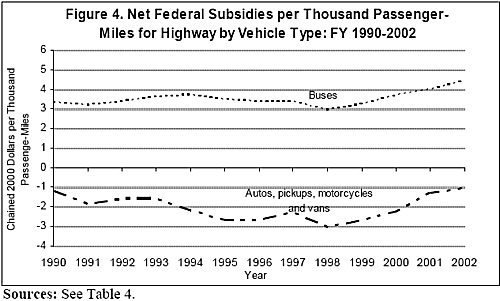
Portland is a PR machine for light rail & streetcar
Here are Some Facts About Portland Oregon
Source: U.S. Department of Transportation, : Federal Subsidies to Passenger Transportation Local Copy
Related page: mostly paid by user fees.

- Highway passenger transportation system paid significantly greater amounts of money to the federal government than their allocated costs.
- Transit received the largest amount of net federal subsidy
- federal subsidy to passenger railroads was the third largest, except for the years 1998-2000 (Figure 1), when it was second.

- On average, highway users paid $1.91 per thousand passenger-miles to the federal government over their highway allocated cost during 1990-2002.
- On average, passenger rail received the largest subsidy per thousand passengermiles, averaging $186.35 (in year 2000 chained dollars) per thousand passengermiles during 1990-2002.
- On a per thousand passenger-miles basis, transit received the second highest net federal subsidy, second to passenger rail, averaging $118.26 in year 2000 chained dollars

- On average, highway users paid $1.91 per thousand passenger-miles to the federal government over their highway allocated cost during 1990-2002 (Figure 2).
- While net federal subsidy per thousand passenger-miles for buses (including school, transit, and intercity buses) has been positive during 1990-2002, it has been negative for autos, pickups, and vans (Figure 4).

- Autos, pickups, and vans paid on average about $2.03 per thousand passenger-miles more each year than their allocated cost.
Source: U.S. Department of Transportation, Bureau of Transportation Statistics: Federal Subsidies to Passenger Transportation Local Copy
Related page: mostly paid by user fees.
What if Roads Were highly Subsidised?
Transit is Hightly Subsidised, NOT highways
One usually hears this claim as a criticism of driving and to imply the superiority of transit. But:
1) But what if roads were subsidized? Roads are used by everyone (they even had roads before cars!), so it is really a case of user pays. Very fair.
2) Fact is that transit is highly subsidised by the majority of the taxpayers for a small minority of people who actually use transit. Not a case of user pays. Not very fair.
Of course, roads costs are mostly paid by user fees.